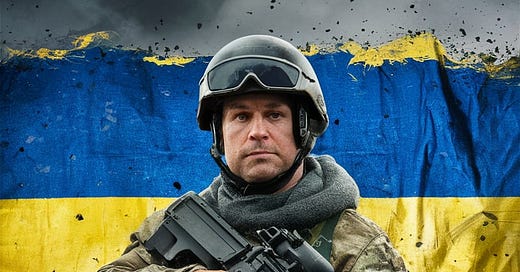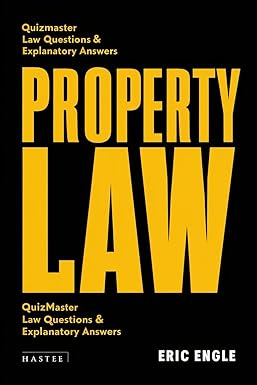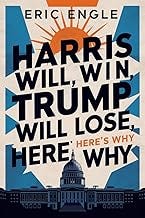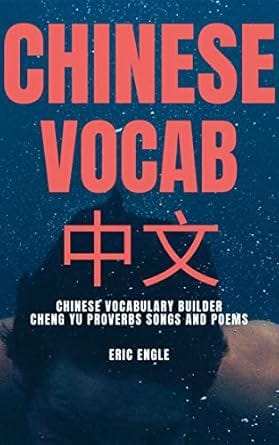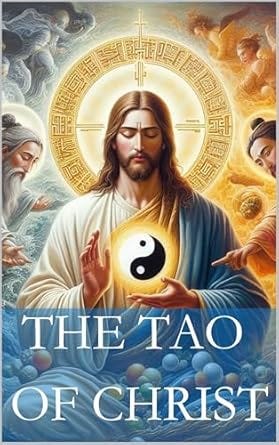What do Mao, Jesus, Lao Zi, and Buddha have in common? Answer inside! + Free eBooks
Contents: Free eBooks, Essays, Chinese Notes, Word of the Day (Encirclement.)
Welcome to the future click here for the landing page, "read sample" to preview the book. Enjoy reading!
You can also write your review here: https://www.goodreads.com/book/show/216418847-ukraine-s-war
This week’s free ebooks
Your book reviews are greatly appreciated they help others to find the books and also help me to improve. Thanks for your feedback, readers are leaders!
Free this week. Just download and review.
Found the insights valuable? Your review can help others benefit too! If you enjoyed the book, please consider leaving a 5-star review. Your feedback makes a big difference! https://www.amazon.com/review/create-review/ref=cm_cr_othr_d_wr_but_top?ie=UTF8&channel=glance-detail&asin=B0D9C5MKQ7
You can also write your review here. https://www.goodreads.com/book/show/216418847-ukraine-s-war
Write your review here please it helps me and other readers to discover the works.
Harris Will Win, Trump Will Lose: Here's Why (Election 2024)
Write a book review of it all the cool kids aren’t
by Eric Engle
Kindly write your book review here it helps get the word out and lets others discover it. https://www.amazon.com/review/create-review/ref=cm_cr_othr_d_wr_but_top?ie=UTF8&channel=glance-detail&asin=B08KWPDCKH
Understanding the USA: A Secular Federal Democracy, a Limited Government of Laws, Not Men
It's basically unstoppable. This does not mean its perfect: it isn't. It is perfectible, capable of improvement. This is why the democracies tolerate dissidents: "the correct line is forged in struggle with the incorrect line".
In prior issues I explained US misperceptions of China, that mistakenly impose into China many ideas and aspects of Russian culture, history and governance. Then, I exposed how China likewise miscasts Russia, seeing it as just another European country, but larger and a neighbor, which Russia is not. Now I think it sensible to point out how others likely misperceive the USA, because the USA is not a party political state, nor is the USA "the family writ large" with in theory limitless powers: unlike most other countries the USA is a secular federation featuring separation of state from church as well as the separation of private law issues from the public interest, a limited government under law and not personal rule of a monarch or dictator. The USA, unlike most every other state on earth, is more akin to a corporation than a family, where "anyone can make it".
The critique of Western Marxists' understanding of the United States' political system is rooted in their superficial analysis that fails to grasp the fundamental differences between the US and other nations. By comparing the US to fascist Germany, Stalin's USSR, Imperial Japan, or European empires, one would quickly realize that the US stands out as a unique case. Unlike these examples, the US is not a party-political state, where a single party or ideology dominates the government.
In the US, political affiliations are loose, and both major parties have broad and inclusive ideologies that cater to a wide range of voters. This is a deliberate design, as the need to secure a majority vote among the politically uncommitted, such as independents and swing voters, constrains parties from embracing extremist views. This is in stark contrast to countries with "winner-take-all" systems, where political power is generally synonymous with economic power. In party political states where political parties have much more tightly defined ideologies and are there are also more parties, but some parties can be and sometimes are banned as incapable of forming a responsible government.
The US founding fathers made a conscious effort to separate church and state, as well as to promote private industry over state enterprises. This approach has led to a distinct model of governance, where the state is not seen as the sole arbiter of power. Instead, the US system is built on the principles of limited government by consent, where the governed view the system as legitimate.
This is not to say that the US system is perfect or without its flaws. However, it is essential to recognize that the US has a unique history and development that sets it apart from other nations. The idea of the state as an all-powerful entity is antithetical to the US model, which emphasizes individual rights, private enterprise, and a system of checks and balances.
Historically, the US has sought to protect individual freedoms from invasions by the rapacious tyrannical tendencies of the government. The Constitution, ratified in 1788, established a framework for governance that has endured for over two centuries. The system of federalism, where power is divided between the federal government and individual states, has allowed for a degree of decentralization and experimentation that is unparalleled in many other countries.
The US has also been shaped by its experience with colonialism and the legacy of the British Empire. The American Revolution, fought from 1775 to 1783, was a rebellion against British rule and the imposition of taxes without representation. This experience instilled in the American people a deep-seated distrust of centralized power and a commitment to individual liberties.
In contrast, many European countries have a more centralized tradition of governance, with a stronger emphasis on state power and control. The French Revolution, for example, led to the establishment of the Napoleonic Code, which enshrined the principles of state authority and centralized power. Similarly, the German Empire was built on a model of centralized authority and colonial administration.
The US system, with its emphasis on individual rights, private enterprise, and limited government, has allowed for a degree of innovation and entrepreneurship that is unmatched in many other countries. The US has been at the forefront of technological progress, from the development of the internet to the exploration of space. This is not to say that the US is without its challenges, but rather that its unique system of governance has created an environment that fosters innovation and progress.
In conclusion, the critique of Western Marxists' understanding of the US political system is well-founded. By failing to grasp the fundamental differences between the US and other nations, they overlook the unique characteristics of the US system, which has allowed it to thrive as a beacon of democracy and individual freedom. They want the US government to do more than it is capable of, and also complain when the US government exercises its few powers: this is to be expected of would be revolutionaries, permanent dissatisfaction, no matter what, with the existing orde.r
They should be careful what they wish for.
Mao, Christ, and Buddha:
The Unity and Conflict of Opposites & their mutual transformation. Faith the size of a mustard seed can move a mountain (泰山)
This is such a basic concept in Chinese Maoism, dialectical materialism, and even Daoism that it seems self-evident to me that there is inevitably dynamic tension, conflict and harmony, between any polar pair. Likewise, to anyone trained in these matters it is also nearly self-evident that everything carries within itself the seeds of its own destruction in other words transformation thanks to internal conflicts. Less obvious to Maoists, Dialectical Materialists, and Daoists is whether and how these conflicts can be resolved into relative harmonic contradictions or instead inevitably lead to destructive absolute contradictions, and if so how. To Mao and myself alike they obviously can be resolved, because people are not rocks and have volition, the exceptional capacity to understand(we mostly just react rarely can choose) and thus influence if not control entirely or escape our material circumstances. To anyone who studied Buddhism it is evident that "merely" bringing into alignment one's own assumptions and beliefs, statements, and actions that internal contradictions are resolved and thus rather than collapsing into destructive disarray it is possible to master oneself and thus persuade and influence others through our own example: that is also the most effective style of leadership. This Buddhist insight is what Jesus meant when he said if you have only the faith i.e. BELIEFS so small as a mustard seed then you can move a mountain. This is a direct reference to Buddhist meditation in the Christian bible. That is, faith, really belief, is the idea, from which statements and then actions spring. By concentrating on the idea we can usually attain it. To this idea of doing the impossible, of moving a mountain, Mao borrowed the old Chinese legend of Yugong moves the mountains: A man was digging at a mountain: a passer by asked why. The man explained he was removing the mountain, since it blocked travel and made farming inconvenient. The man laughed at Yugong, calling him foolish. But Yugong said stop. Wait. Listen. I have children. When I am old they shall have children. And these children of mine will surely continue my work, just like Yu the Great did, and finshed his father's incomplete work. And their children shall also continue to dig away. This mountain cannot grow in size. Thus generation after generation, one day this mountain will be removed. Thus it is that by making thought, word, and action one we can indeed move mountains through our beliefs.
This mountain is death, war, disease, hunger, ignorance, hate, misery. These seem impossible, overwhelming, the evil spirits unleashed from pandora's box. But wait. Stop. Listen. Many of these are man made disasters. If men made war then men can also end war.
We are very likely witnessing the last imperialist war in world history in Ukraine because predatory wars are much less productive than peace. War is simply repulsive, it repels support. Moreover, responsible countries like China will surely notice the fact Russian equipment performs badly and that Russian military doctrine is also ineffective. China is very likely willing to learn from Russia's bad example the consequences of errors in an overly-aggressive foreign policy. Rather than taking chances and wasting resources on foolish foreign military ventures the Chinese government, following its own logic and goals, will not resort to the use of force to try to conquer Taiwan or even to wage a border war with India or Vietnam.
The performance of Russian equipment and military doctrine in Ukraine has been lackluster, and responsible countries like China are likely to take note of this. China's own logic and goals dictate that it will not resort to force to conquer Taiwan or engage in border wars with India or Vietnam. Instead, China will likely focus on economic and diplomatic means to achieve its objectives, recognizing that war is no longer a viable or desirable solution.
Ukraine's approach to the conflict has been characterized by a clear alignment of Ukrainian intellectuals' ideas, Ukrainian politicians public statements, and the actions of the Ukrainian people all being united in the face of a deadly criminal corrupt invading common enemy. Ukraine's leadership has consistently articulated its goals and values, and its military strategy have been focused on defending its territory and people. This alignment of ideas, statements, and actions has allowed Ukraine to mobilize international support and maintain a strong sense of national unity, despite the challenges posed by the war.
Ukraine's approach has been marked by a willingness to adapt and innovate, using new technologies and tactics to counter Russian aggression. This flexibility and creativity have allowed Ukraine to stay one step ahead of its enemy, despite being outgunned and outmanned.
In conclusion, the concept of unity and conflict of opposites suggests that the outcome of the conflict in Ukraine is far from certain. However, based on the alignment of Ukrainian ideas, Ukrainian statements, and Ukrainians' actions, as well as Ukraine's adaptability and creativity, it is likely that Ukraine will emerge victorious. Ukraine's approach has been characterized by a clear sense of purpose and direction, and its leadership has demonstrated a commitment to defending its people and territory.
In contrast, Russia's approach has been marked by a lack of clarity and coherence, with conflicting goals and values that have undermined its military strategy: lies and greed both engendered the Russian invasion and also doom it to failure. Russia's reliance on brute force and unjustifiable violence has alienated it from the international community, making it increasingly isolated and vulnerable.
Ultimately, the conflict in Ukraine will be decided by the ability of each side to align its ideas, statements, and actions, and to adapt to changing circumstances. Based on current trends, it appears that Ukraine is better positioned to achieve this alignment and emerge victorious. מנא מנא תקל ופרסין
“I am the way” 我是道
https://www.amazon.com/Tao-Christ-Understanding-Comparison-Christianity-ebook/dp/B0D8L7KZXV
Unlocking the Secrets of Chinese Characters
As a Chinese learner, it's essential to understand the intricacies of the Chinese writing system. The six methods of character formation are not mutually exclusive, but rather, they work together to create a complex and beautiful writing system. In this article, we'll delve into the details of each method, providing examples and explanations to help you master the Chinese characters.
The Six Methods of Character Formation: A Mutually Reinforcing System
The six methods of character formation are:
1. Pictograms: Characters that represent objects or concepts through simple drawings.
2. Ideograms: Characters that represent abstract ideas or concepts through combinations of pictograms.
3. Phonetic-semantic compounds: Characters that combine a phonetic component with a semantic component to represent a word or concept.
4. Semantic-phonetic compounds: Characters that combine a semantic component with a phonetic component to represent a word or concept.
5. Loan characters: Characters that are borrowed from other languages or dialects.
6. Derived characters: Characters that are created by modifying existing characters.
These methods are not mutually exclusive, and many characters use a combination of two or more methods to convey meaning.
The Multifaceted Nature of Chinese Characters
Every Chinese character is a combination of image, sound(s), and ideas. This multifaceted nature of Chinese characters makes them rich and expressive, but also challenging to learn. Characters can have multiple components, each contributing to the overall meaning and sound of the character.
Pictograms and Ideograms: The Building Blocks of Chinese Characters
Pictograms and ideograms are the foundation of the Chinese writing system. These characters are highly simplified and stylized pictures that represent objects, concepts, and ideas. They are often reused as phonetic and semantic elements in more complex characters, making them easier to remember and recognize.
This is a good example 虫 is a bug, it is a picture of a snail from the side, or a beetle from above, but it also contains phonetic element 中zhong which rhymes with chong. the other component is 厶si so perhaps the ancients thought combining S and ZH made CH.
Character Components: Reusable and Versatile
1. The six methods are not exlusive: they are mutually reinforcing!
2. Every character is a combination of image, sound(s) and ideas.
3. Many characters in fact have an initial sound clue and a final clue as well. Chinese spelling tends to be read from top down and from right to left but i have seen examples of bottom up and left to right.
a) FOR EXAMPLE wo wu ou wo3 戊 is the inital sound clue. 手 is the final clue. The ideograph here is hand+spear, spearman since every man in antiquity was also a soldier.
b) there are many other examples. 声 for example has an initial sound clue sh- above 士 though with this one the picture is probably better a masterly man above striking chimes below as a representation of the idea of sound.
4 明ming is not en example of a phonetic character. It combines the two brightest objects in the sky to represent the idea of bright.
5 CHARACTER COMPONENTS CAN BE REUSED TO REPRESENT OTHER THINGS as indeed 月 is both a picture of hte moon (the line in the middle calls attention to the idea that the moon is bright) but 月 is also a picture of ribs, a slab of meat with ribs visible. Meat, muscle.
6 thus 口 may be a mouth, windows in a building, walls of a city seen from above or perhaps also walls of a manor house seen from above.
Character components can be reused to represent different things, depending on the context in which they appear. For instance, the component (kǒu) can represent a mouth, windows in a building, walls of a city, or even walls of a manor house.
This versatility of character components is a key feature of the Chinese writing system, allowing characters to convey complex meanings and relationships in a concise and elegant way.
Studying Pictographs and Ideographs First
It's best to study pictographs and ideographs first, as they are the foundation of the Chinese writing system. The pictographs are highly simplified stylized pictures which may be seen from various angles. Pictographs and ideographs are highly simplified and stylized pictures that represent objects, concepts, and ideas. They are then reused as phonetic and semantic elements in complex characters and are easier to remember because they are much more common. They are few in number but are all high frequency! They are also the simpler characters with fewer brush-stropes and are more easily memorized. In contrast the phono semantic characters are many in number but each of them is infrequent. Since they are so numerous people often make the mistake of studying them first, get frustrated, and give up. By mastering pictographs and ideographs, learners build the proper foundation for learning more complex characters and developing a better understanding of Chinese.
The Benefits of Learning Chinese
Jobs, investments, romance, culture. Chinese opens so many doors. I wrote an entire series of books about learning Chinese using innovative methods, called "Quizmaster Learn Chinese." These books provide a comprehensive guide to learning Chinese, using a combination of pictograms, ideograms, phonetic-semantic compounds, and other methods to help learners build a strong foundation in Chinese.
Contact me for review eBooks and to learn more about this innovative approach to learning Chinese. eric.engle@yahoo.com
Word of the Day
Here is the list of translations for the word "encirclement" and the sample sentence:
- English: encirclement (n); "Russian units were encircled by Ukrainians."
- French: encerclement (m); "Les unités russes ont été encerclées par les Ukrainiens."
- Spanish: cerco (m); "Las unidades rusas fueron cercadas por los ucranianos."
- German: Einkreisung (f); "Russische Einheiten wurden von Ukrainern eingekreist."
- Estonian: ümberringi hoidmine (n); "Venelased ümberringisid vene üksusi."
- Russian: окружение (n); "Русские части были окружены украинцами."
- Ukrainian: оточення (n); "Російські підрозділи були оточені українцями."
- Mandarin Chinese: 包围 (v/n); 包围 (bào wéi) "俄罗斯部队被乌克兰人包围了。" "E luo si bu duì wǔ bèi wukelan ren bào wéi le."


